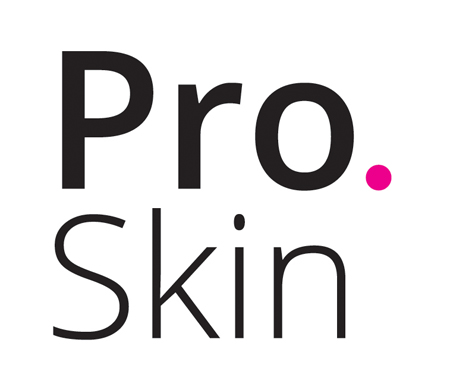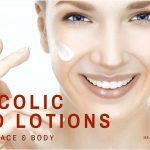
Traditional (i.e., decorative) and cosmetic tattoo procedures happen to be performed for centuries. Cosmetic tattoos or “permanent cosmetics” are utilized to reshape, recolor, recreate, or modify eyeshadow, eye liner, eyebrows, lips, beauty marks, and oral cavity blush. Furthermore, permanent cosmetics are utilized aesthetically to boost nipple-areola renovation procedures as well as for other applications.
Regrettably, there’s much confusion concerning the overall safety facets of permanent cosmetics. For instance, with different couple of reports of signs and symptoms localized towards the inked area during MR imaging, many radiologists have declined to do examinations on people with permanent cosmetics, particularly inked eye liner. This undue concern for possible adverse occasions prevents patients with cosmetic tattoos use of an essential diagnostic imaging technique.
Even though it is well-known that permanent cosmetics and tattoos could cause artifacts and both cosmetic and ornamental tattoos might be connected with relatively minor, short-term cutaneous reactions, the regularity and harshness of soft tissue reactions or any other problems associated with MR imaging and cosmetic tattoos is unknown. In 2002, Tope and Shellock conducted research to look for the frequency and harshness of adverse occasions connected with MR imaging inside a population of subjects with permanent cosmetics. A questionnaire was given to clients of cosmetic tattoo technicians. This survey requested study subjects for demographic data, details about their tattoos, as well as for their encounters during MR imaging procedures. Is a result of 1,032 surveys were tabulated. A hundred thirty-five (13.1%) study subjects went through MR imaging after getting permanent cosmetics applied.
3 individuals (1.5%) experienced problems connected with MR imaging. One subject reported a experience of "slight tingling" and yet another reported a "burning" sensation. Both occurrences were transient and didn’t avoid the MR procedures from being performed. According to these bits of information and extra information within the peer-reviewed literature, it seems that MR imaging might be performed in patients with permanent cosmetics without serious soft tissue reactions or adverse occasions. Therefore, the existence of permanent cosmetics shouldn’t prevent someone from undergoing MR imaging.
Before undergoing an MR procedure, the individual ought to be requested if they has ever endured a lasting coloring technique (i.e., tattooing) put on your body. Including cosmetic applications for example eye liner, lip-liner, lip coloring, in addition to decorative designs. This is essential due to the connected imaging artifacts and, more to the point, because a small amount of patients (less than 10 documented cases) have observed transient skin irritation, cutaneous swelling, or heating sensations to begin from the permanent colorings in colaboration with MR procedures (overview of Medical Device Reports, 1985 to 2011).
Interestingly, decorative tattoos have a tendency to cause worse problems (including first- and 2nd-degree burns) for patients undergoing MR imaging when compared with individuals which have been reported for cosmetic tattoos. Regarding decorative tattoos, instructions towards the editor described another-degree burn that happened onto the skin from the deltoid from the decorative tattoo. The authors recommended that "the heating might have come either from oscillations from the gradients or, much more likely in the RF-caused electrical currents". However, the precise mechanism(s) accountable for complications or adverse occasions within the various cases which have happened associated with decorative tattoos is unknown.
Furthermore, Kreidstein et al. reported that the patient possessed a sudden burning discomfort to begin of the decorative tattoo while undergoing MR imaging from the lumbar spine utilizing a 1.5-Tesla MR system. Swelling and erythema was resolved within 12 hrs, without proof of permanent sequelae. The tattoo pigment utilized in this situation was ferromagnetic, which possibly described the signs and symptoms felt by the individual. Surprisingly, to be able to enable the MRI examination, an excision from the inked skin was performed.
The authors of the report mentioned, "Theoretically, the use of a pressure dressing from the tattoo prevents any tissue distortion because of ferromagnetic pull". (However, this relatively benign procedure wasn’t attempted with this patient.) The authors also established that, "In some instances, elimination of the tattoo could be the most practical way of allowing MRI".
Kanal and Shellock (1998) commented about this report inside a letter towards the editor, suggesting the reaction to this case was "rather aggressive". Clearly the trauma, expense, and morbidity connected with excision of the tattoo far exceed individuals which may be connected with ferromagnetic tattoo interactions. Direct use of a cold pack (e.g., towards the site of the tattoo may likely mitigate any heating sensation that could occur in colaboration with MR imaging.
Artifacts
Imaging artifacts connected with permanent cosmetics and certain kinds of eye shadows happen to be reported. These artifacts are predominantly connected with the existence of pigments which use iron oxide or any other kind of metal and exist in the immediate part of the applied pigment or material. As a result, tattoo- and makeup-related MR imaging artifacts shouldn’t prevent a diagnostically sufficient MR imaging procedure from being performed, particularly in consideration that careful choice of imaging parameters may easily minimize artifacts associated with metallic materials.
The only real possible exception for this is that if the anatomy of great interest is incorporated in the identical position of in which the tattoo was applied utilizing an iron oxide-based pigment. For instance, Weiss et al. reported that heavy metal and rock particles utilized in the pigment base of mascara and eye liner tattoos, possess a paramagnetic effect that triggers difference in the neighborhood magnetic field in adjacent tissues. Alterations in the MR signal pattern may lead to distortion from the globes. In some instances, the artifact and distortion may mimic actual ocular disease, like a ciliary body melanoma or cyst.
GUIDELINES And Suggestions
In thought on the accessible literature and experience relating to MR procedures and patients with permanent cosmetics and tattoos, guidelines to handle these people include, the next:
-The screening form employed for patients will include an issue to recognize the existence of permanent cosmetics or decorative tattoos.
-Before undergoing an MR procedure, the individual ought to be requested if they were built with a permanent coloring technique (i.e., tattooing) put on any area of the body. Including cosmetic applications for example eye liner, lip-liner, lip coloring, in addition to decorative designs.
-The individual ought to be informed from the risks connected using the site from the tattoo.
-The individual should be advisable to immediately inform the MRI technologist regarding any unusual sensation felt to begin from the tattoo in colaboration with the MR procedure.
-The individual ought to be carefully monitored using visual and auditory means throughout the whole process of the MR system for the utmost safety.
-Like a precautionary measure, a cold pack (e.g., ice bag) may be relevant to the tattoo site throughout the MR procedure.
Additionally towards the above, information and suggestions happen to be deliver to patients through the U . s . States Fda, Center for Food Safety and Applied Diet, Office of Cosmetics and colours Booklet, the following: " the potential risks of staying away from an MRI whenever your physician has suggested one could be much more than the potential risks of complications from your interaction between your MRI and tattoo or permanent makeup. Rather of staying away from an MRI, people who have tattoos or permanent makeup should inform the radiologist or specialist of the fact to be able to take appropriate safeguards, avoid complications, and assure the greatest results."
REFERENCES
Becker H. Using intradermal tattoo to boost the ultimate consequence of nipple-areola renovation. Plast Reconstr Surg 198677:673.
Carr JJ. Danger in performing MR imaging on ladies who have inked eye liner or similar kinds of permanent cosmetic injections. Am J Roentgenol 1995165:1546-1547.
DeBoer S, et al. Body piercing/tattooing and trauma diagnostic imaging: Medical myths versus realities. J Trauma Nurs 200714:35-8.
Gomey M. Tattoo pigments, patient clothing, and magnetic resonance imaging. Risk Management Bulletin #12748-8/95, The Doctors’ Company, Napa, CA. August, 1995.
Halder RM, et al. Micropigmentation to treat vitiligo. J Dermatol Surg Oncol 198915:1092-1098.
Jackson JG, Acker H. Permanent eye liner and MR imaging. (letter) Am J Roentgenol 1987149:1080.
Expert Panel on MR Safety, Kanal E, Barkovich AJ, Bell C, et al. ACR guidance document on MR safety: 2013. J Magn Reson Imag 201337:501-30.
Kanal E, Shellock FG. MRI interaction with tattoo pigments. (letter) Plast Reconstr Surg 1998101:1150-1151.
Klitscher D, et al. MRT-caused burns in inked patients. Situation report of the traumatic surgery patient. Unfallchirurg 2005108:410-414.
Kreidstein ML, et al. MRI interaction with tattoo pigments: Situation report, pathophysiology, and management. Plast Reconstr Surg 199799:1717-1720.
Laumann AE, Derick AJ. Tattoos and the body piercings within the U . s . States: A nationwide data set. J Am Acad Dermatol 200655:413-21.
Lund A, et al. Tattooing of eyelids: Magnetic resonance imaging artifacts. Ophthalmic Surg 198617:550-553.
Morishita Y, et al. Influence of mechanical effect because of MRI-magnet on tattoo seal and eye shadows. Nippon Hoshasen Gijutsu Gakkai Zasshi 200864:587-90.
Noureddine Y, et al. Knowledge about magnetic resonance imaging of human subjects with passive implants and tattoos at 7 T: A retrospective study. MAGMA 2015 [Epub in front of print].
Offret H, et al. Permanent cosmetics and magnetic resonance imaging. J Fr Ophtalmol 200932:131.e1-3.
Ross Junior, Matava MJ. Tattoo-caused skin "burn" during magnetic resonance imaging inside a professional football player: A situation report. Sports Health 20113:431-4.
Sacco D, et al. Artifacts brought on by cosmetics in MR imaging from the mind. Am J Roentgenol 1987148:1001-1004.
Shellock FG, Crues JV, Editors. MRI Bioeffects, Safety, and Patient Management. Biomedical Research Publishing Group, La, CA, 2014.
Tattoos. Food and drug administration Medical Bulletin 199424:8.
Tope WD, Shellock FG. Magnetic resonance imaging and permanent cosmetics (tattoos): Survey of complications and adverse occasions. J Magn Reson Imag 200215:180-184.
Vahlensieck M. Tattoo-related cutaneous inflammation (burn grade I) inside a mid-field MR scanner. (letter) Eur Radiol 200010:97.
Wagle WA, Cruz M. Tattoo-caused skin burn during MR imaging. (letter) Am J Roentgenol 2000174:1795.
Weiss RA, et al. Mascara and eye-lining tattoos: MRI artifacts. Ann Ophthalmology 198921:129-131.
Resourse: http://mrisafety.com/
 Proskin Clinics
Proskin Clinics 
